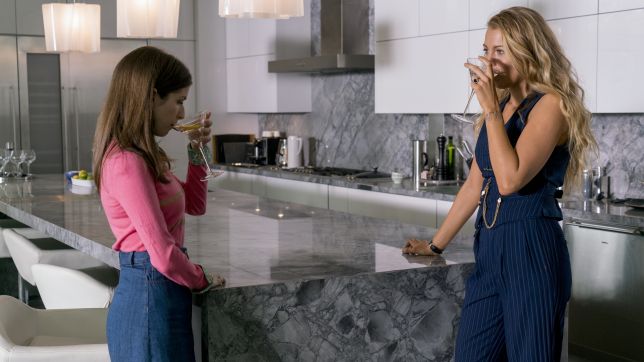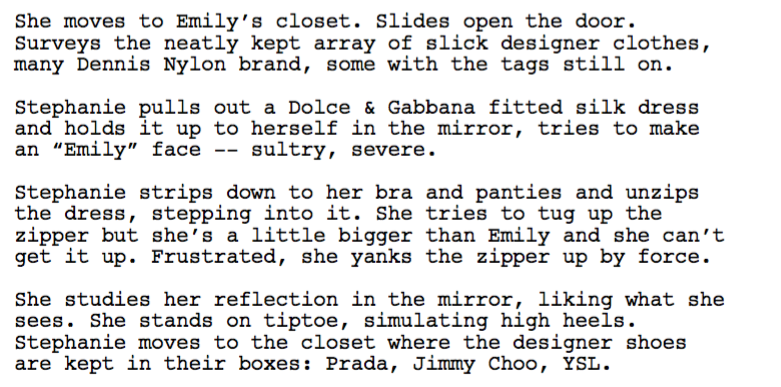This week Jorge dives into martinis and missing persons, to examine the mythos of a perfect woman in the fall's most delightful surprise.

First impressions are important, and writers usually either build upon or subvert the first thing we see about a character: the clothes that they’re wearing, the setting that they appear in, the way they carry themselves, and the adjectives they use. All of these elements can tell us who a character is before they even say a word.
A Simple Favor is all about image and perception. The image we present to the world, and the part of ourselves that we keep hidden. The way we are versus the way we are perceived. In particular, the film is about Emily’s image. Not only her physical looks (which are hugely important), but the aura and lore that she has created around her. The idea of Emily...
Let’s take a look at the script and see how it presents this seemingly perfect woman; how the presentation reveals the character.
A Simple Favor
Screenplay by: Jessica Sharzer
Based on the novel by: Darcey Bell
Emily is first introduced to us by name. In the first scene, Stephanie (Anna Kendrick) reveals in her mommy vlog that her best friend has gone missing. The first impression we get of Emily is that of other people. The way they see her, the concern they (or this particular friend) has for her.
The first time we actually see her (outside her son’s school on a rainy day) she is a vision. An oasis. Adjectives and phrases like “chic, “glamorous,” “sharp cheekbones,” “flawless makeup,” and “runway ready” are used in the page to describe her. She is presented as someone unattainable, far outside Stephanie’s mommy realm. And it doesn’t hurt that this woman comes in Blake Lively’s body.

The fantasy of a person who is not really a person is also the place Emily lives in. The script calls her home a “modern dream house of glass, steel and poured concrete.” Screenwriter Jessica Scharzer makes sure to underline the word “choice.” Emily is a woman made of choices. She chooses exactly what you will see of her. And what she wants you to see is an “eclectic mix of modern and vintage that somehow works perfectly together.” Unsurprisingly, the house reflects her.
The screenplay makes a point to carefully describe every aspect of her living space; the things that decorate her walls, the materials that it is made of, the styles she is evoking. This space is a sharp contrast to the homey vibe that Stephanie has also carefully created for herself. Where Stephanie is a warm, frazzled, overprotective mother, Emily is a cold mystery.

***

***

But the strongest statement the movie makes about Emily is not made through her house, but her clothes. While a character’s outfits are usually only described on the page in the barest ways, A Simple Favor takes its time to drop brand names, and styles, and colors, and patterns, and materials. A Burberry coat. Dennis Nylon. A Dolce & Gabbana fitted silk dress. Prada, Jimmy Choo, YSL…
Clothes are an inextricable part of Emily’s identity. As we learn her backstory later on (which I’m not going to spoil because that’s half the insane fun of the film) we understand there’s a reason for it. It’s one of the ways she differentiates herself from who she used to be.

A Simple Favor is a unique movie in many ways and the detailed descriptions in a screenplay are one reason why, as they lay the groundwork for the costume and art departments to build upon and elevate. Sharzer and the design team understand the importance of presentation in the story. Of gloss as a way of façade. The Academy should really take note.
Even before Blake Lively’s deliciously raspy remarks win us over along with Stephanie, what the movie presents to us visually about her tells us everything we need to know. Or what she wants us to know. But don’t be fooled. Underneath that removable dickie, and that pantsuit and that cane, there’s someone else entirely.